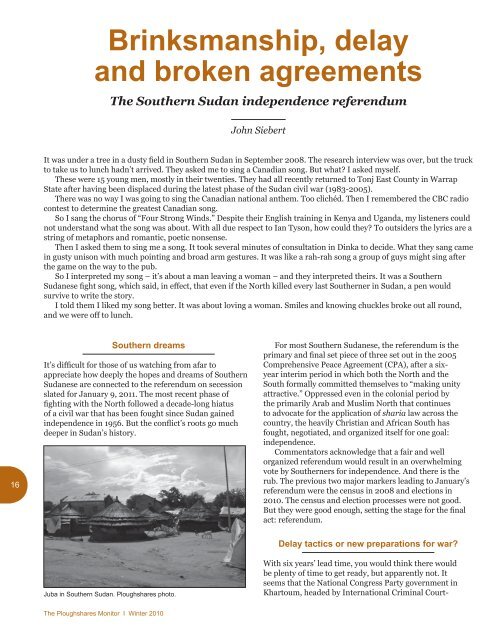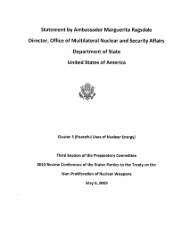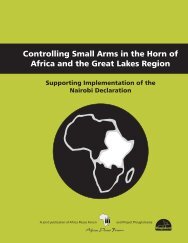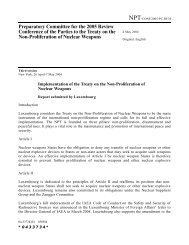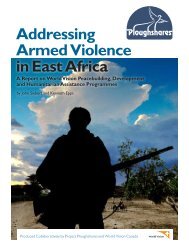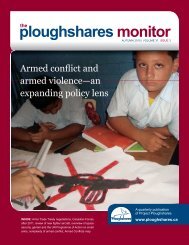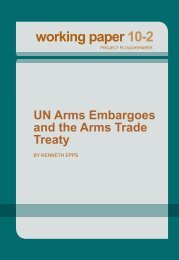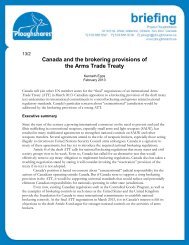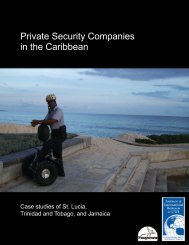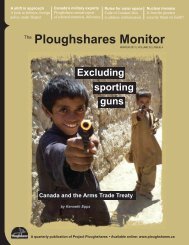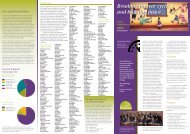Brinksmanship, delayand broken agreementsThe Southern Sudan independence referendumJohn SiebertIt was under a tree in a dusty field in Southern Sudan in September 2008. The research interview was over, but the truckto take us to lunch hadn’t arrived. They asked me to sing a Canadian song. But what? I asked myself.These were 15 young men, mostly in their twenties. They had all recently returned to Tonj East County in WarrapState after having been displaced during the latest phase of the Sudan civil war (1983-2005).There was no way I was going to sing the Canadian national anthem. Too clichéd. Then I remembered the CBC radiocontest to determine the greatest Canadian song.So I sang the chorus of “Four Strong Winds.” Despite their English training in Kenya and Uganda, my listeners couldnot understand what the song was about. With all due respect to Ian Tyson, how could they? To outsiders the lyrics are astring of metaphors and romantic, poetic nonsense.Then I asked them to sing me a song. It took several minutes of consultation in Dinka to decide. What they sang camein gusty unison with much pointing and broad arm gestures. It was like a rah-rah song a group of guys might sing afterthe game on the way to the pub.So I interpreted my song – it’s about a man leaving a woman – and they interpreted theirs. It was a SouthernSudanese fight song, which said, in effect, that even if the North killed every last Southerner in Sudan, a pen wouldsurvive to write the story.I told them I liked my song better. It was about loving a woman. Smiles and knowing chuckles broke out all round,and we were off to lunch.16Southern dreamsIt’s difficult for those of us watching from afar toappreciate how deeply the hopes and dreams of SouthernSudanese are connected to the referendum on secessionslated for January 9, 2011. The most recent phase offighting with the North followed a decade-long hiatusof a civil war that has been fought since Sudan gainedindependence in 1956. But the conflict’s roots go muchdeeper in Sudan’s history.For most Southern Sudanese, the referendum is theprimary and final set piece of three set out in the 2005Comprehensive Peace Agreement (CPA), after a sixyearinterim period in which both the North and theSouth formally committed themselves to “making unityattractive.” Oppressed even in the colonial period bythe primarily Arab and Muslim North that continuesto advocate for the application of sharia law across thecountry, the heavily Christian and African South hasfought, negotiated, and organized itself for one goal:independence.Commentators acknowledge that a fair and wellorganized referendum would result in an overwhelmingvote by Southerners for independence. And there is therub. The previous two major markers leading to January’sreferendum were the census in 2008 and elections in<strong>2010</strong>. The census and election processes were not good.But they were good enough, setting the stage for the finalact: referendum.Juba in Southern Sudan. <strong>Ploughshares</strong> photo.Delay tactics or new preparations for war?With six years’ lead time, you would think there wouldbe plenty of time to get ready, but apparently not. Itseems that the National Congress Party government inKhartoum, headed by International Criminal Court-The <strong>Ploughshares</strong> Monitor I <strong>Winter</strong> <strong>2010</strong>
A Sudanese child drives a donkey cart through the market of Abyei, Sudan. © Peter Martell/IRIN.indicted President Omar al-Bashir,has nothing to gain by holding thereferendum. Khartoum’s actionsin the days leading up to January9 have been characterized quitenicely as “brinksmanship, delay andbroken agreements – old traditions ofSudanese politics” (Verjee <strong>2010</strong>, p. 9).Northern calls to delay thereferendum have been met by hintsof a resulting unilateral declarationof independence and readiness toreturn to war from the South. Thereis a reported military buildup by bothsides along the North-South borderthat cannot be adequately patrolledby the limited number of UN troopsalready in the country to facilitatethe implementation of the CPA. Inthe meantime, there are constantrumours of war.Much that should already havebeen done has not been. The North-South border is not demarcated.The state of Abyei is to have its own,separate referendum on whether itwants to belong to the North or theSouth. Yet quiet negotiations hostedin Ethiopia have not cleared the wayfor the Abyei vote to take place atthe same time as the wider vote onseparation.Like a conflict-inducing curse,Sudan’s primary foreign exchangeearner, oil, is largely located in theSouth or in the disputed North-Southborder region. Pipelines and refineriesare all to the North. While revenuesfrom oil extraction have been sharedby the North with the South duringthe six-year interim period, there isno guarantee of mutual cooperation ifthe South goes its separate way.The international community,led by US President Obama (Copnall<strong>2010</strong>) and Secretary of State HillaryClinton (Quinn <strong>2010</strong>), are outliningfor Khartoum a range of carrots andsticks designed to prevent politicaland technical difficulties from turninginto a national disaster.Apocalypse ora dream fulfilled?Apocalypse: the final revelation. Theword is often misused, but properlyunderstood it captures the moodof the people of Southern Sudan,and their family and friends in thediaspora, including those in Canada.Over two million people died in thelast phase of the civil war. The youngmen, for whom I sang “Four StrongWinds” in 2008, were a mere drop inthe bucket of four million Sudanesedisplaced in the same period.The referendum period has themarkers of apocalypse: a convictionby the South that good will finallytriumph decisively in the presentevil age and vindicate their suffering.Their oppressors in the North willbe isolated to their own fate by theestablishment of a new country inSouthern Sudan.What we know about apocalypseand dread is that hopes and dreamseasily become nightmares and untolddestruction. If civil war betweenNorth and South does return as aresult of the referendum – or its delay– its consequences will certainly becatastrophic. The last six years havegiven Southern Sudan the time andmeans to vastly improve its militarycapabilities (McEvoy & LeBrun <strong>2010</strong>).The previously dominant tactics ofguerrilla war will be supplementedwith more destructive battles usingmechanized conventional armaments.Let’s hope for the sake of allSudanese that the referendum takesplace, that it is good enough, and thatthe results allow Southern Sudan tomove forward while relegating itsfight songs to the past.ReferencesCopnall, James. <strong>2010</strong>. Barack Obama pressesfor peaceful Sudan referendum. BBC News,September 25. http://www.bbc.co.uk/news/world-africa-11403968.McEvoy, Claire & Emile LeBrun. <strong>2010</strong>.Uncertain Future: Armed Violence in SouthernSudan. Geneva: Small Arms Survey. http://www.smallarmssurveysudan.org/pdfs/HSBA-SWP-20-Armed-Violence-Southern-Sudan.pdf.Quinn, Andrew. <strong>2010</strong>. Clinton calls Sudanreferendum ‘ticking time-bomb’. Reuters,September 8. http://in.reuters.com/article/idINIndia-513714<strong>2010</strong>0908.Verjee, Aly. <strong>2010</strong>. Race Against Time:The countdown to the referenda in SouthernSudan and Abyei. London: Rift Valley Institute.http://www.sudantribune.com/IMG/pdf/Race_Against_Time_-_Aly_Verjee_-_30_Oct_<strong>2010</strong>-2.pdf.John Siebertis Executive Directorof <strong>Project</strong> <strong>Ploughshares</strong>.17The <strong>Ploughshares</strong> Monitor I <strong>Winter</strong> <strong>2010</strong>


